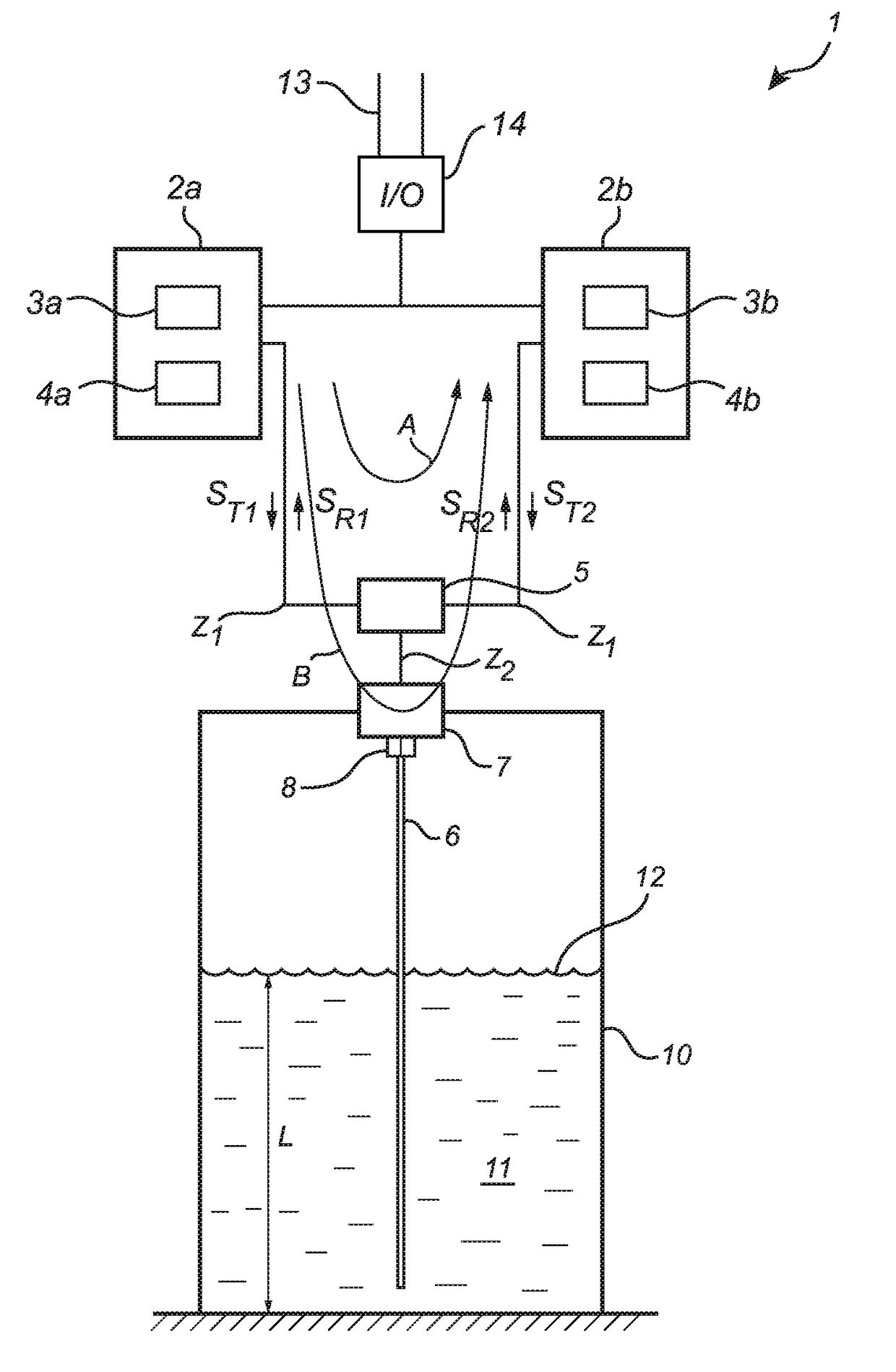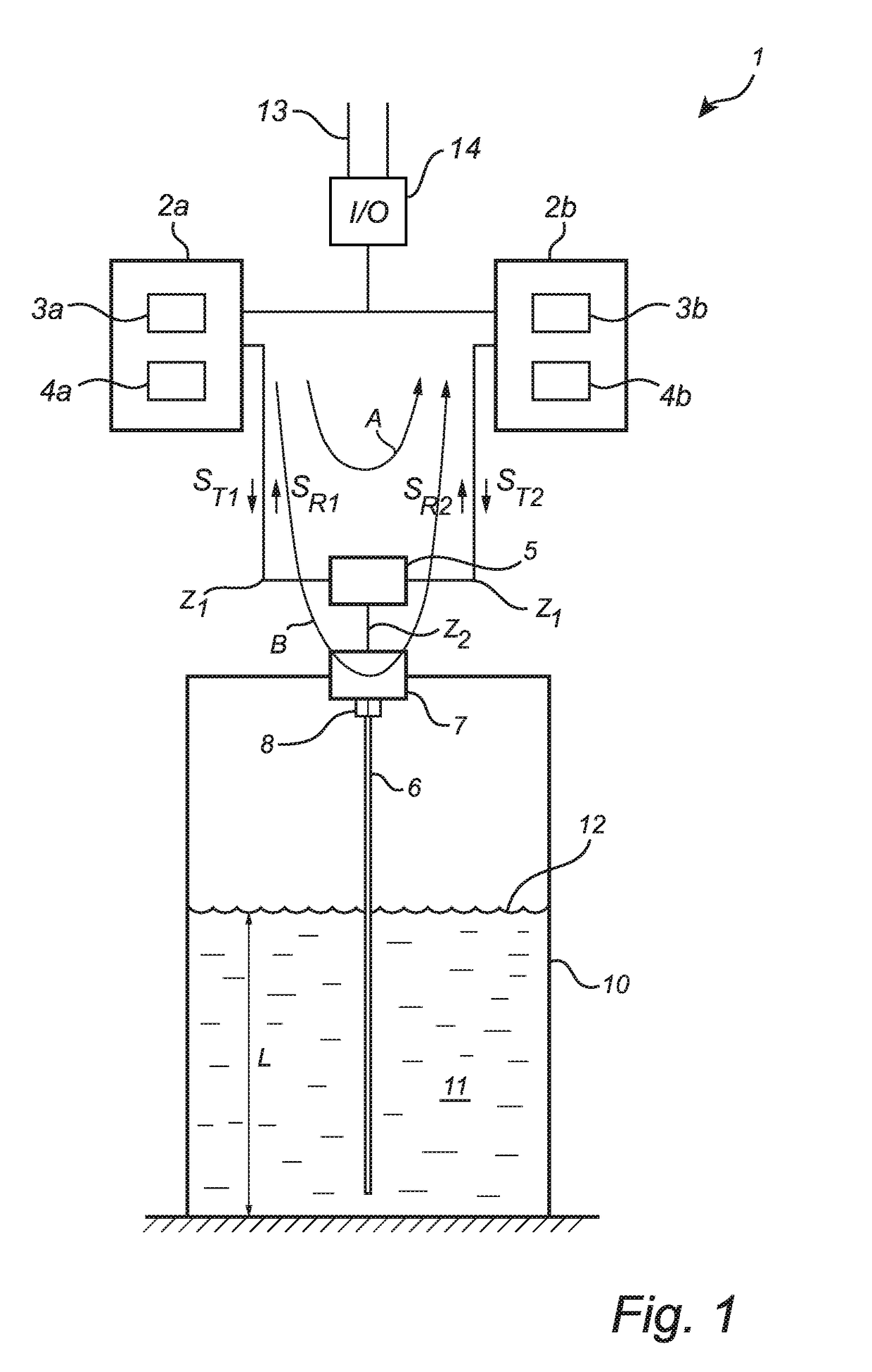Multi-channel guided wave radar level gauge
a radar level gauge and guided wave technology, applied in the direction of using reradiation, liquid/fluent solid measurement, coupling device, etc., can solve the problems of material clogging and mechanical strength, increased resistive losses, and inconvenient use of radar level gauges using antennas to provide free propagating signals. , to achieve the effect of reducing mutual interference, safe operation and efficient manufactur
- Summary
- Abstract
- Description
- Claims
- Application Information
AI Technical Summary
Benefits of technology
Problems solved by technology
Method used
Image
Examples
Embodiment Construction
[0033]In the present detailed description, various embodiments of the radar level gauge system according to the present invention are mainly discussed with reference to radar level gauge systems using pulsed signals and filling level determination by means of measuring the time between transmitted and reflected pulses. However, the teachings of the present invention are potentially also applicable using other radar techniques. When pulses modulated on a carrier are used, phase information can also be utilized.
[0034]FIG. 1 schematically illustrates a radar level gauge system 1 according to an embodiment of the present invention, comprising at least two measurement electronics units 2a, 2b, each including a circuitry arrangement with transceiver circuitry 3a, 3b connected to processing circuitry 4a, 4b. Each transceiver circuitry 3a, 3b is connected to a power divider 5 which will be described in more detail below. The power divider is connected to a single wire transmission line prob...
PUM
 Login to View More
Login to View More Abstract
Description
Claims
Application Information
 Login to View More
Login to View More - R&D
- Intellectual Property
- Life Sciences
- Materials
- Tech Scout
- Unparalleled Data Quality
- Higher Quality Content
- 60% Fewer Hallucinations
Browse by: Latest US Patents, China's latest patents, Technical Efficacy Thesaurus, Application Domain, Technology Topic, Popular Technical Reports.
© 2025 PatSnap. All rights reserved.Legal|Privacy policy|Modern Slavery Act Transparency Statement|Sitemap|About US| Contact US: help@patsnap.com



